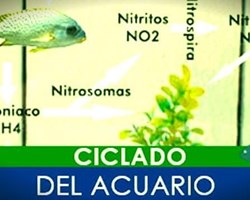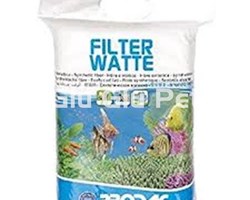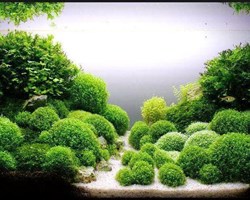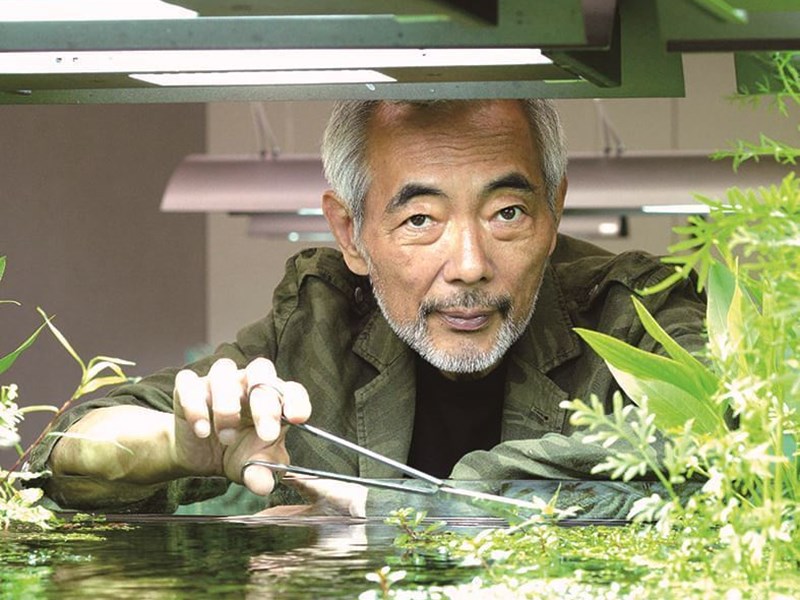
WHAT IS AQUASCAPING OR AQUATIC LANDSCAPING?
Aquascaping is the art and technique of setting up an aquarium, arranging aquatic plants, rocks or wood in an aesthetically pleasing way.
With Aquascaping what it is about is to suggest natural environments, using plants and rocks to create spectacular underwater landscapes in miniature.
The fish add color and movement to what is an underwater landscape yet inspired by nature.
The germ of these water gardens is formed in the Dutch style, also called Dutch, developed in the Netherlands in the 1930s.
This style emphasizes the use of natural plants placed on terraces of different heights, but rocks or wood were not used.
Aquascaping, also known as Aquatic Landscaping or Naturalistic Landscaping, was first introduced to the world in the 1990s by Japanese Takashi Amano, who made natural underwater gardens look like dreamscapes.
Takashi Amano (1954-2015), photographer, designer and aquarist, is one of the key names and maximum references in the world of aquarism or aquascaping, although his work and work has always gone further.
Interested in the environment and the destructive action that human beings exert on it, he has wanted to leave a legacy of the vast natural wealth of the world through his photographs, and especially of the last virgin forests of his homeland, Japan.
Died in 2015, Takashi Amano was able to convey the beauty, peace and serenity of the aquatic world by seeking balance through his extensive work as an aquarist, using Japanese gardening techniques, wabi-sabi philosophy and Zen. , and promoting the development and creation of these natural environments through the "International Aquatic Plants Layout Contest".
Takashi Amano was born on July 18, 1954 in Niigata Prefecture (Japan), in the vicinity of the Yoroi swamp, the largest in the region, which is inhabited by a multitude of plants, fish and waterfowl. Perhaps, due to this fact, his interest in aquatic plants and animals would begin very soon and, possibly, would mark his way of seeing, appreciating and interpreting life and nature around him.
Already during his elementary school years, Takashi joined the biology club founded and organized by Professor Nagashima, a club that would later distinguish itself nationally by winning several awards, including an award for scientific research by Takashi himself on the paradise fish, also starting at that time the study and experimentation on the relationship established between fish and aquatic plants.
He soon showed a very special interest in aquarium hobby, beginning to build and photograph planted aquariums in 1972.
Professor Nagashima would say of him: "I think Takashi has revolutionized the old and rigid concept of the aquarium, which was just a glass box to observe fish, making the plants the stars of the aquarium and transforming the work of the aquarist into a art form.”
Takashi Amano's interest in aquatic plants would be successive, stemming from the discovery that, in Germany, the creation of aquariums representing miniature aquatic ecosystems had become a fashionable hobby.
It was then that he thought that he could devote himself to the study of tropical plants and fish, although he feared that he would not be able to make it the career of his life.
By that time he was already a very creative college student, a member of the national cycling club (where he stayed from 1974 to 1990), a watercolor painter, and the first creator of a movement that fought to protect the local environment of Niigata.
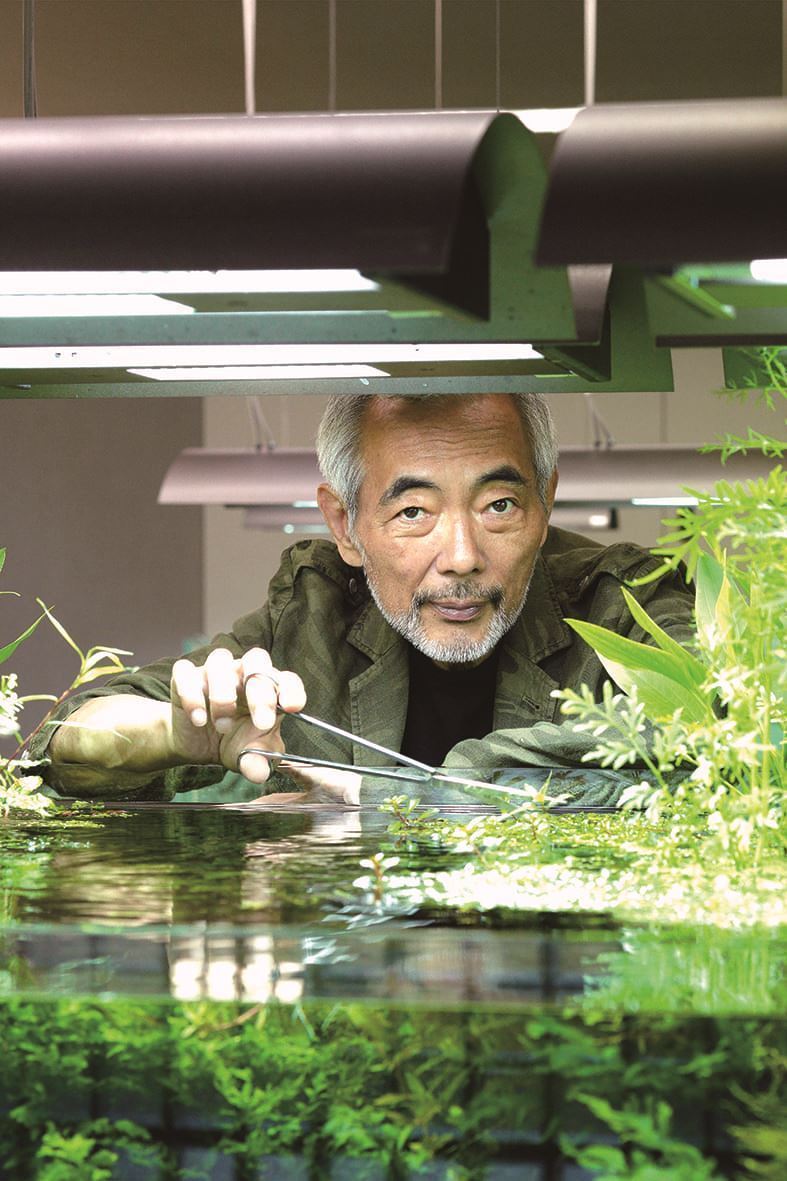
Takashi Amano was a member of the Japan Professional Photographers Society, the Japan Advertising Photographers Association, the International Association of Environmental Photographers, and the Society for Scientific Photography.
Starting in 1975, Takashi visited the tropical forests of Amazonia, Borneo, West Africa and the virgin forests of the southern islands of Japan, working on a series of photographs that, under the banner of "Untouched Nature", captured the details of nature with its large-format panoramic cameras.
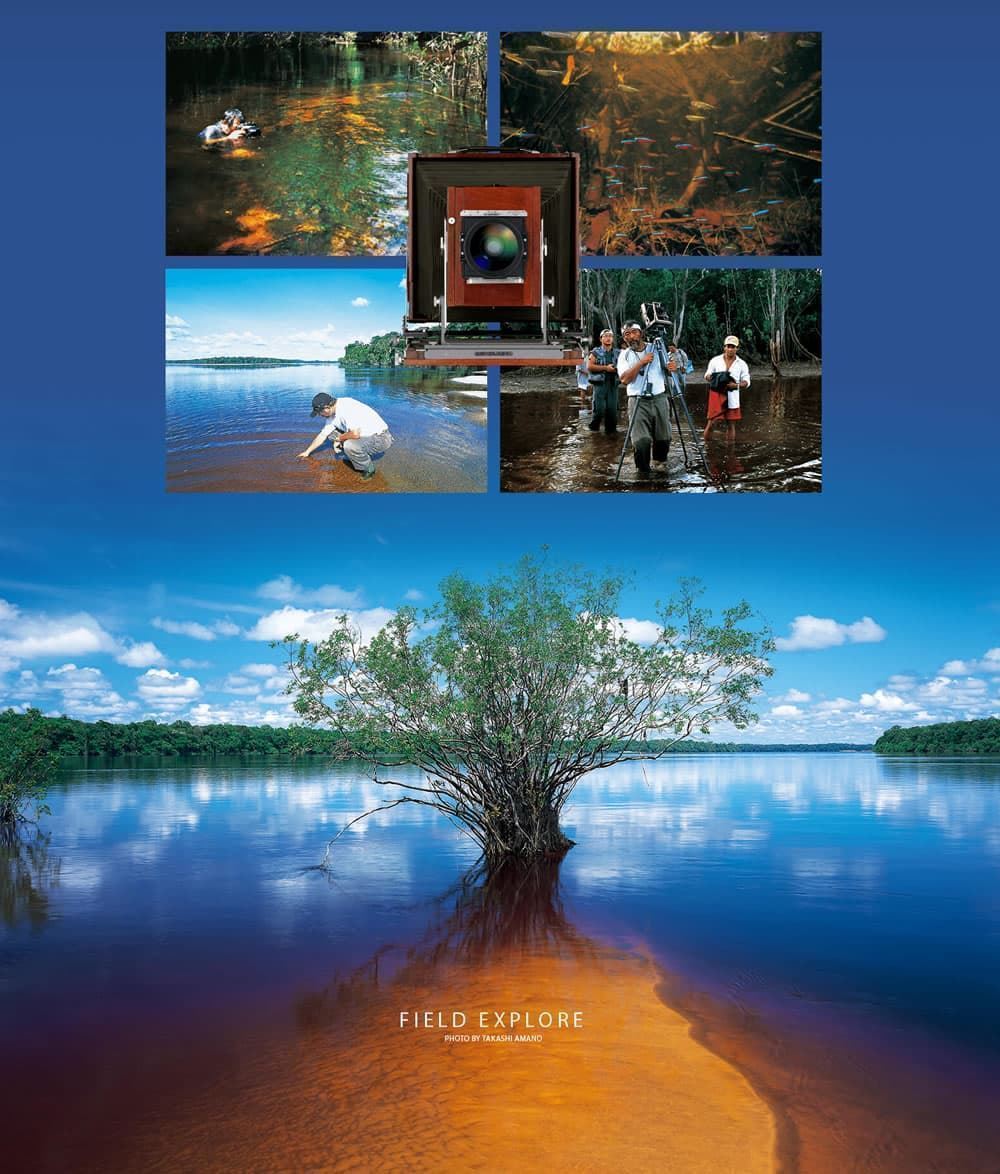
A year later, in 1976, he would begin to publish his photos and essays on fish and aquatic plants, as well as the fauna, flora and people of the places he had visited, although it would not be until a few years later that his work would be recognized worldwide. .
His interest in aquascaping led him to create, in 1982, the Japanese multinational company Aqua Design Amano Co., Ltd. (better known as ADA, https://www.adana.co.jp/en/), specializing in products for planted aquariums, which is currently a benchmark in the world of aquarism and aquarium hobby.
https://www.adana.co.jp/en/contents/nature_aquarium/index.html.
In 1991, she entered her first photography competition, with her “Chameleon Diary” series winning honors and “Leading Ladies in Shade” selected for public display. “Yamor” won the silver medal at the Fuji Film Nature Photo Contest the same year. In addition to that, he would win various awards given by the Niigata city hall and offices.
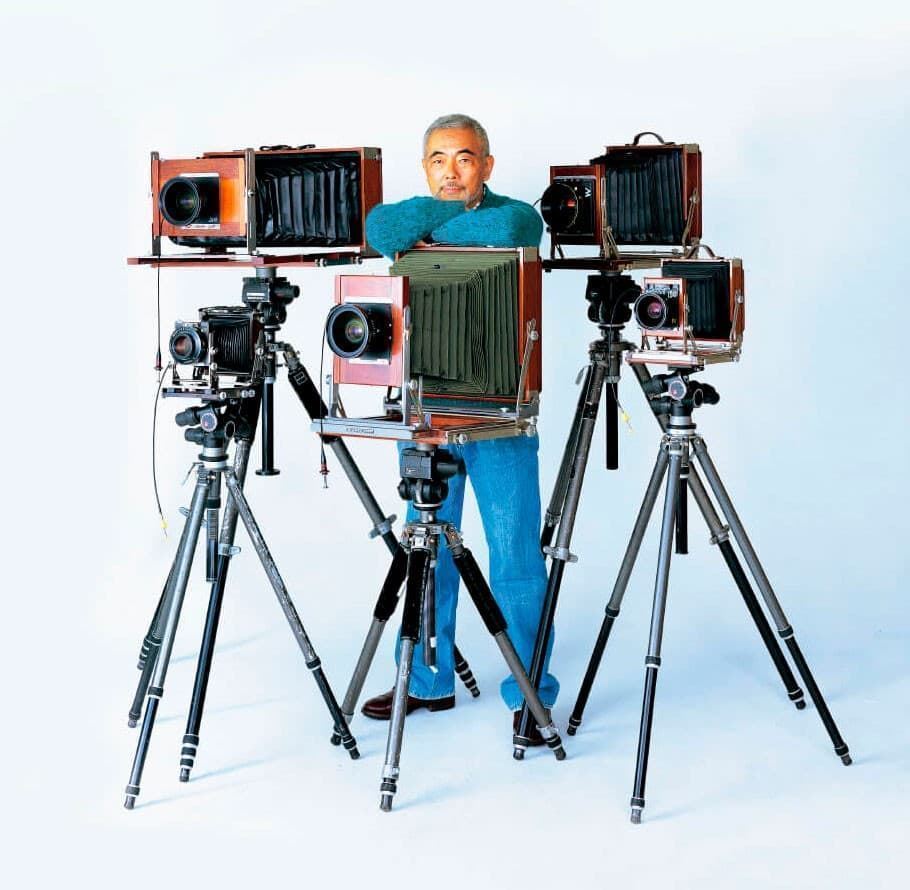
As of 1992, his photographic work began to be published in various books, especially dedicated to aquarism, as well as in various international exhibitions, dedicated not only to aquarism, but to the wild nature photographed during his trips to the Amazon or the forests of Sado Island.
Starting in 2001, Takashi annually held the International Aquatic Plants Layout Contest (IAPLC), through ADA, considered the best aquascaping or aquascaping contest in the world, whose international participation has been increasing over the years.
International contest for aquatic plant layouts
where aquarists around the world get together.
IAPLC (The International Aquatic Plants Layout Contest) is the worlds largest aquarium contest with the most total number of
applications and participating countries.
Aquatic plant layouts created by participants are evaluated on the global stage.
Let's enjoy the IAPLC with friends around the world!
In 2008, two huge panoramic photos by Takashi Amano were part of the decoration of the 34th G8 Summit that took place in Toyako, Hokkaido, Japan, from July 7 to 9 of that same year, where a huge forest was shown of cedars from the island of Sado in 4×1.5 meter panels, made using his large format camera.
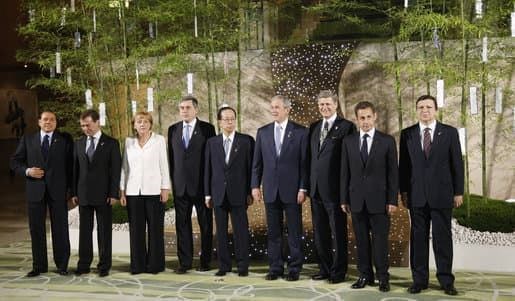
In the last years of his life he gave numerous lectures on his expeditions and photographic experiences in nature all over the world, constantly reminding of the importance of tree replanting programs as a means of protecting the Earth's environment.
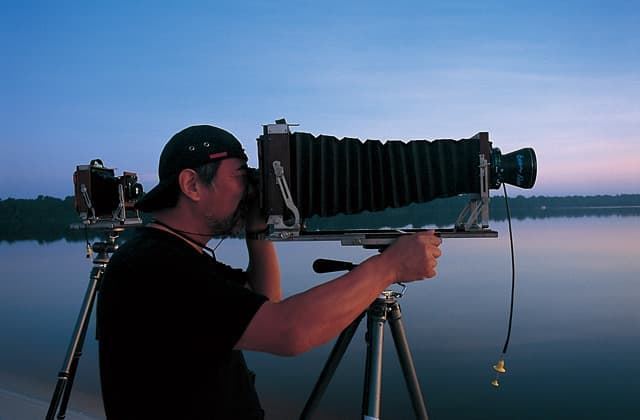
On August 4, 2015, at 11:18 a.m., and at the age of 61, Takashi died of pneumonia in the same prefecture where he was born, at his home in Niigata, leaving a legacy of beauty for posterity. and the memory of his struggle to preserve nature in all its extension: the rivers, the forests and the seas that give us life. A memory that was intended to be, nothing more and nothing less, than the awareness that each one of us must do what is in their power to preserve the natural legacy of the Earth.
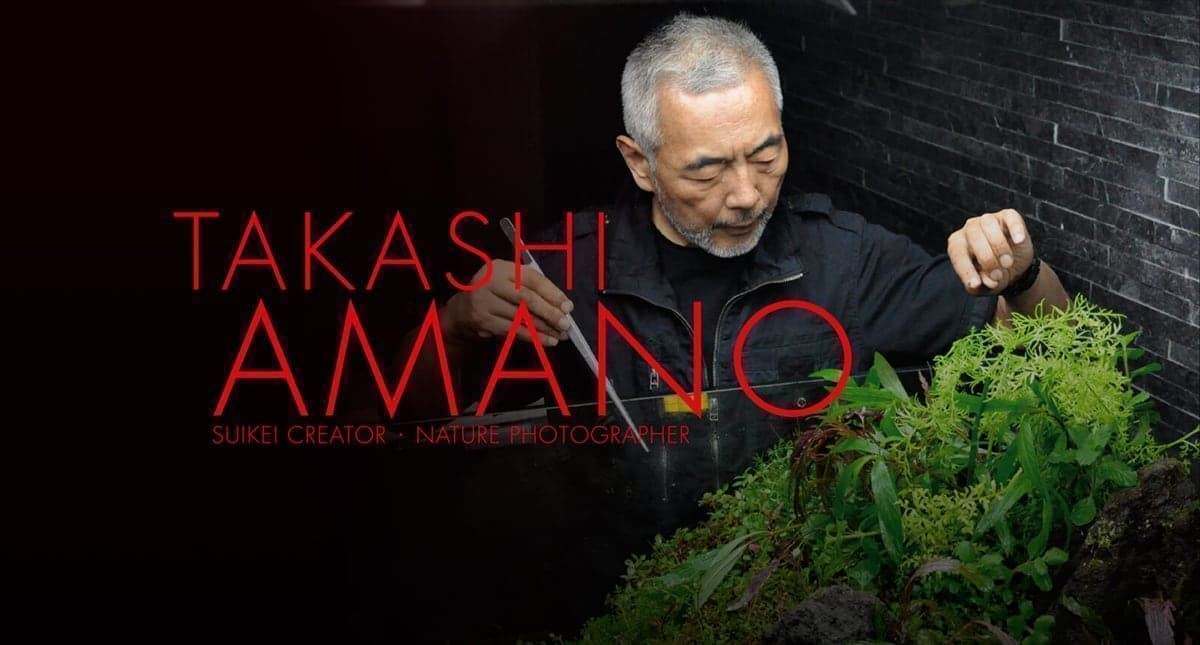
Takashi Amano's work has greatly influenced the world of aquariums, not only in terms of planted aquariums, but also in the concept of the arrangement of the decoration of this type of aquatic landscape, where the balance between the natural and the the beautiful, between minimalism and exuberance, between animals and plants.
His work has been followed by countless aquarists from all over the world who have tried to imitate his work or find their own path following his steps through aquarism and wabi-sabi and zen philosophies, while seeking the simplicity of nature.
His approach works amazingly well, and is based on tanks containing a few small fish and lots of plants.
When it comes to equipment, high intensity aquarium lighting systems and carbon dioxide fertilization for plants are almost mandatory.
It is possible to create an aquascape with just plants, but you can also use fish and plants or rocks and hardscape, without plants by following some specific methods.
If you find it difficult to create an aquascape, then take a look at the many examples of good aquascapes on the net and choose a scene that you like and that can serve as inspiration, such as those of the genius Tashaki Amano.
BASIC CONCEPTS OF AQUASCAPING:
As a beginner, Aquascaping may seem difficult.
Preparing the design of an aquascape is quite a challenge.
Once you understand the basic concepts of aquascaping, you will see how it is not difficult.
1.- CHOOSE A STYLE:
Most importantly, before you start your aquascape project, you need to decide what style of aquascaping you really want to do.
There are several main styles that you can choose from, and they will give you the guidelines to create a visually authentic aquascape.
You just have to choose the style that looks appealing to you.
You can choose from a wide range of inspiration styles.
The main ones are:
- Dutch.
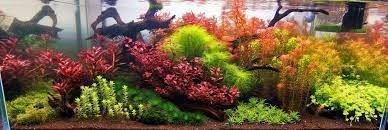
- Natural landscaping.
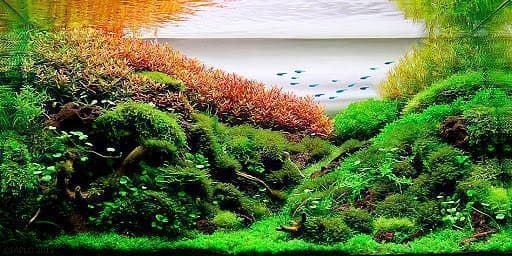
- Iwagumi.
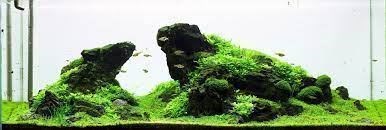
- Jungle.
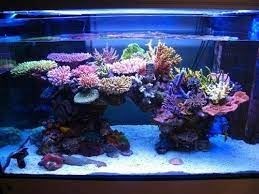
- Biotope.
- Paludarium.
- Sea water reef.
Among these stand out the Japanese style of natural inspiration, the Dutch style of underwater garden, the jungle style.
While the natural style is the recreation of terrestrial landscapes such as mountains, hills, valleys, the Dutch style is characterized by terraces or raised layers containing different types of plants with different types of leaves.
2.- SIMPLE IS BETTER:
Simplicity is key, so keep it as simple as possible.
It is unusual to see different types of rocks in one place.
The same goes for plants, it is typical to see one type of plant dominating a place.
Aquascaping is all about imagination so it is recommended that you follow a particular style and keep it simple which will make the aquascape look more attractive.
It is advisable to focus on a rock, fish or plant shape first to make it more realistic.
4.- MAINTAIN THE BALANCE OF THE AQUASCAPE:
Harmony is one of the most essential aspects in the realization of this type of art.
To maintain harmony in the aquarium, it is crucial to achieve a balance between plants, decorations and fish, as well as between empty and filled spaces in the aquarium.
It is an art to perfectly balance the atmosphere between the plants, rocks and fish in the aquarium.
The balance of contrast between light and dark depends on how you are going to arrange the other plants, wood, and rocks.
5.- USE IMAGINATION AND CREATIVITY:
No definitive rules apply in aquascaping.
You can use your imagination without limits.
The aquarium in which you are going to work is a recreation of reality.
Close your eyes and then imagine yourself standing on the bank of a river.
You can easily imagine what natural art actually looks like.
Make your imagination come true and add a touch of creativity.
PRINCIPLES OF AQUATIC LANDSCAPING:
Aquascaping has four principles.
If you familiarize yourself with these four principles and apply them to your aquarium, you will quickly begin to see those ideas in your head turn into amazing aquascapes.
1.- FOCAL POINT:
The focal point will help your tank have a visually striking appearance, and guide the viewer's eye through the tank.
Focal points can be created through plant selection, by color, size, or texture.
Focal points prevent the design from becoming too busy or confusing.
In most cases, less is more.
In the different styles of aquascaping, focal points are naturally created following the guidelines of each style.
The Iwagumi style, for example, uses multiple stones placed in a certain pattern, with a central stone placed in one of the lines of the thirds of the tank.
This creates a focal point according to the Rule of Thirds.
2- THE RULE OF THIRDS:
The Rule of Thirds has been used since humans began creating visual arts.
In essence, it is a form of composition within an image to balance the objects within it.
The human eye is attracted to images that are divided into a grid.
A grid that divides the image into three equal parts, both vertically and horizontally, giving a total of 9 equal parts.
Placing things on the lines created by this grid almost always creates a balanced and visually interesting layout.
The four intersection points are the strength points of the image.
3.- PERSPECTIVE:
Proper use of perspective in an aquascape is what makes the "magic."
Once again, you can see that the Rule of Thirds is present in this tank.
You will also notice that perspective dominates this aquascape.
4.- SIZE OF THE SUBSTRATE:
The size of the substrate can play an important role in the appearance of the aquarium.
The small granules give a greater sense of perspective between the landscape, the plants and the substrate.
If you have the budget to use this type of substrate, do it.
Just remember that it is a finish coat, not a substrate to make a thick coat.
THE BIG FOCUS ROCKS:
Using large stones in aquariums is a way to use not only the horizontal space in the aquascape, but also take advantage of the vertical space.
This is a common problem with beginner aquascaping: they choose good substrates, place plants well, and make a good selection of fish, but their hardscape just doesn't take advantage of all the aquarium space.
The stones or the woods are not big enough to take advantage of the space above the substrate, so everything ends up looking like a low layout.
THE SMALLEST SIZE STONES:
Beginners almost always forget about these stones.
Although these are sometimes hard to come by because vendors only have large and medium stones, it is important to incorporate them to create variations in the design.
It is important to think of the hardscape as if you were in nature: the great stones are not alone.
There are almost always smaller stones around, either because they have been broken or have been pushed to the side.
The same should be found in your Aquascape.
Place smaller stones in the tank to create a more natural look.
CONTRAST:
Contrast is a subtle principle, and is not always found in many of the Aquascaping aquariums you may see, staying in a planted aquarium.
You have to know how to contrast in a balanced way, the basic premise is this: If everything stands out, nothing stands out.
What it basically means is that if you put "a thousand" variations of plants, substrates and hardscape, you are going to create a cluttered tank with too much contrast.
If you choose two plants that contrast a lot in color, for example a single color substrate and one type of stone, then you have the start of a great aquascaping.
THE AQUARIUM WITH PLANTS:
What can happen to your aquascape is that it becomes a simple aquarium with plants.
If the aquarium does not have contrast, it will be a "plant urn" for most viewers.
The easiest way to avoid this is to use all aspects of the aquarium, the plants, the substrate and the hardscape, in such a way as to show the differences between the materials chosen.
If you have a lot of green plants that grow quickly, choose a bright red plant to place next to the focal point.
AQUARIUM PLANTS:
In addition to layout, style, and design, aquascaping requires specific means of proper care and maintenance of underwater plants.
Aquatic plants are a great addition to the aquarium, and many experts suggest the use of natural aquarium plants. It is the most convenient and can give you many useful benefits for the aquarium, here are some:
- It converts Co2 into oxygen, which is very healthy for any type of fish.
- Beneficial in removing different chemicals that cause fish suffocation.
- It gives a natural, realistic and more diverse look to the aquarium.
- It serves as a refuge for fish and other aquatic animals.
- It can help in maintaining the cleanliness and quality of the aquarium water.
- One of the most crucial things that aquascapers need to consider is the choice of suitable, healthy and energetic aquarium plants.
- They must be placed correctly and pruned to obtain the desired shape.
TYPES OF PLANTS FOR AQUASCAPING:
There are different types of plants that we can use in aquascaping, and they can be classified by their position in the aquarium, their speed of growth, their color, etc.
There are three different types of plants divided according to their position in the aquarium:
- Foreground plants.
- Background plants.
- Background plants.
1.- FOREGROUND PLANTS:
Foreground plants are placed at the front of the aquarium.
They are smaller than the others and grow quite slowly.
They are also sometimes called groundcover plants.
They have the ability to spread throughout the aquarium and cover the aquarium substrate.
2.- THE BACKGROUND PLANTS:
The background plants, which are basically taller than the foreground plants.
They are commonly placed on the sides as well as in the center.
They add a lot to the natural appeal without taking up a lot of space.
3.- THE BACKGROUND PLANTS:
These are the largest plants in the aquarium and are placed at the rear.
It can be a realistic background and will serve as a hiding place for the fish.
Apart from aquarium plants according to their position in the fish tank, we can distinguish the following types of plants:
- Ground Floor Plants: As the name suggests, ground floor plants are used by aquascapers to create a tapestry or carpet of plants. A lush and lush green meadow, making the underwater garden more beautiful and attractive. You can choose between plants such as Aquatic Grass (Lilaeopsis Brasiliensis) or Cuba (Hemianthus Callitrichoides), which cover the bottom, spreading horizontally throughout the tank.
- Fast growing plants: When you start with aquascaping, you can choose fast growing plants like Vallisneria, Cabomba or Hygrophilia that would grow quickly without much effort.
- Floating Plants: Although too many floating plants can block light, many aquascapers prefer to use them to visually enhance their aquascaping.
HOW TO SELECT THE BEST PLANTS FOR YOUR AQUARIUM:
You may find this task easier, but there are several things to consider before finding the perfect plants that suit your taste and match your aquarium.
As well as the time and effort that goes into deciding which fish to include, choosing the best aquarium plant also requires extensive decision making.
Aquatic plants are the most attractive decoration for an aquarium.
They have different types, shapes, purposes and effects in the water garden.
Our Glu Glu Pet guide that we showed you in a previous blog, aquarium plants for beginners, may help you select the best plants for your aquascaping.
It is important to take into account the size and color of the plants when they are adults.
Choose plants that are the appropriate size for where you are going to place them.
In most cases, a stem plant is not placed in the foreground, as it is likely to obscure the view of the aquarium as it grows.
A low-growing ground cover plant is also not placed at the rear of the aquascape. It wouldn't make much sense, because it would never be seen.
Apart from that, you also need to know how to take good care of them to avoid complications in the medium and long term.
THE BEST LOCATION FOR PLANTS:
To create a beautiful underwater landscape, it is essential for aquascapers to place plants in an aesthetic way.
Plants are the heart of Aquascaping.
The main aspect to consider is the focal point.
It can be anything like a rock, a piece of wood, or a dominant plant.
It is recommended to start with ground cover plants in the foreground and place large, bushy plants in the background.
You can start with the focal point of the tank and work your way up to low and medium growing plants.
At the end, place the tallest plants.
You can choose a concave, convex, rectangular, triangular, or Iwagumi-style composition.
PLANTS OF DIFFERENT COLORS:
To create perspective, depth, and make the aquarium appear more natural, aquascapers use plants of different colors and sizes.
The plants can be grown in groups and with rich color contrast.
Plants commonly used to contrast and enhance color include Cryptocoryne wendtii, walkeri or becketii, Ammania, Alternanthera reineckii, or Rotala.
In particular, 1 species of plants every 10 cm is recommended to ensure a good color contrast.
TIPS ON PLANTS:
A natural look is more pleasing.
If you look at the distribution of aquatic plants in nature, you will notice that everything is not perfect and uniform, but irregular.
Where the substrate is good, the light abundant and the water current not too strong, the plants grow abundantly.
Each plant area will be dominated by a single species.
While planting a single row of Vallisneria along the back of the tank will always look rather fake, planting in a large group effectively evokes a much more natural look.
As with rocks, it is best to use only one type of plant.
Thick patches of Vallisneria or Sagittaria, for example, work well if you're trying to recreate a fast-flowing river, because their leaves fold gracefully in the water, revealing the current.
Choose your plant based on your theme: Java ferns are good for use in rocky tanks that suggest rapids and mountain streams, while bushy plants like Cryptocoryne are great for highlighting in open sandy areas representative of the center of a river or lake.
THE JAVA FERN: THE FRIEND OF AQUASCAPERS:
Java Ferns are among the most profitable plants on the market.
This plant is wonderfully reliable and durable.
Since Java Ferns (Microsorum pteropus) can be attached to almost any type of wood or rock, they are also very versatile, and can be used just as effectively in almost all types of tanks.
Once established, Java ferns produce baby plants at the tips of their leaves, and these can attach to new pieces of wood to create entire jungles of this plant.
Alternatives to the Java fern include Anubias and Bolbitis, both from Africa. Although less sold and often a little more expensive, both are maintained in the same way.
Java Moss (Taxiphyllum Barieri) can also be used in the same way as Java Fern, but is easily damaged by larger fish, so it is best used in smaller tanks.
AT GLU GLU PET WE RECOMMEND THAT YOU TAKE INTO ACCOUNT THE LIGHTING CIRCUMSTANCES FOR YOUR PLANTS:
Before spending money on plants, think about what your aquarium can support.
If you only have one or two lights in the tank or less than 2 watts of lighting per liter of water, then many plants will barely grow, if at all.
It makes no sense to buy plants with high light needs such as Rotala and Bacopa for dimly lit aquariums, as the growth they produce will be irregular and very poor.
Buy more lights or use plants adapted to lower light levels, such as Cryptocoryne or Anubias.
HARDSCAPE:
Hardscape is one of the most used techniques by aquascapers all over the world.
It is about using wood, rocks and resin sculptures.
Hardscape is the perfect foundation for aquascaping.
Hardscape refers to the foundation formed by the substrate, wood, and rocks that make up the structure of the aquascape, and when it comes to hardscape, when in doubt, don't add, take away.
WOOD:
Wood adds a decorative touch to the aquarium, while giving it a natural look.
Wood can be the main focal point, around which plants can be placed.
If your aquarium is meant to be a slice of reality, then you will need to imagine the river or lake shore you want to emulate.
Trees, rushes, reeds, and many other plants may have their roots in the water, but most grow above it.
Using large pieces of wood it is possible to create the illusion of an 'outside world' by letting the tops of these pieces stick out above the water.
Some plants may be allowed to cling to the lid or edge of the tank, suggesting a green bank of vegetation partially emerged from the water.
ROCKS AND STONES:
In addition to wood, aquascapers also use rocks and stones at the heart of their aquarium to create a natural-looking underwater aquascape.
You can aesthetically place rocks, large cobblestones, and smaller pebbles in your aquarium to further enhance its beauty.
The next time you walk along a beach, look at how the rocks are "placed," the large cliff rocks, then the smaller rocks, and finally the gravel and sand.
This geological course can also be observed on a smaller scale on the banks of rivers and lakes.
So if you want to create an aquarium based on a large lake, you have to place the rocks on one side of the aquarium, and the remaining stones more or less in order of size towards the other side of the aquarium.
This will suggest a much more natural environment.
You will probably find that the fish will be placed too.
Certain species stay closer to large rocks, other species to small crevices, and still others to open water.
ROCKS AS A FOCAL POINT:
If you are going to use rocks as the center of your aquarium design, then the best approach is to create at least one focal point where the rock rises between one-half and two-thirds of the height of the tank.
The contrast between the rock and the "empty" water is very effective, and is also highly appreciated by the fish.
The classic way to do this is to simply place three or four large, flat rocks on the bottom of the tank and then place a large slab on top of them like a table.
This kind of structure can be repeated to create as many caves as needed for the fish. If you can't get your hands on rocks of the right size, clay pots and urns work just as well, and the fish will gladly use them.
A little algae covering these pots look surprisingly good in fish tanks, and they're lightweight, relatively inexpensive, and very durable. Some aquascapers like to liven them up a bit by hiding air pumps and submersible lights inside them, creating amazing visual effects.
STABILITY IS PARAMOUNT:
The rocks are heavy, so they have to be handled with care.
Even small amounts of soil falling could break the base of the aquarium.
Fish that like to dig will also chip away at more fragile rock, so always keep this in mind when creating your aquarium environment.
A good approach is to place a shallow layer of about 2-3cm of sand or gravel at the bottom of the tank to act as a cushion.
Then carefully cover with a layer of gravel.
This will prevent burrowing fish from moving that buffer layer of sand or gravel.
Now place the stones on top of this base.
Finally, pour the rest of the sand or gravel into place, placing it around the rocks to add stability.
Lightweight rocks, such as lava rock and tuff rock, should be cemented or siliconed together using putty or some aquarium-safe sealer.
Always place the rocks so that gravity keeps them stable.
Don't pile rocks "crazy."
Periodically check the structure, undoing any excavations that the fish may have made, filling with sand and gravel when necessary.
THE BEST FISH FOR AQUASCAPING:
With fish, the key to realistic aquascaping is getting them to behave naturally.
Fish like barbels and tetras, for example, tend not to form a proper school when kept in small groups, and their beauty is only fully realized when they are in a school.
Instead of having five neons, five guppies, and five barbels, consider having fifteen fish of the same species.
You have to take into account the area in which each species of fish swims.
Fish naturally inhabit three zones:
- The fish that swim at the top,.
- The fish that swim in the middle zone.
- The fish that stay in the substrate.
If you buy fish with this in mind, you can prevent your aquarium from being visually cluttered.
A good rule of thumb is to choose one top and one bottom dweller for every two mid-zone fish.
This holds only if the fish are roughly the same size.
Keeping this in mind, this way you will not see all the fish at once, and that will make the aquarium look more natural.
It's also good for the fish, because it means they don't have to compete for space or food.
Look for fish that are suited to the water, not the other way around.
It is much easier to maintain species adapted to local water conditions.
If you live in a hard water area, then rainbow fish or gold fish can be ideal aquarium inhabitants.
If you live in a soft water area, focus on rasboras or tetras.
Some fish kept in water with the "wrong" chemistry will behave perfectly, but others will exhibit poor colors and a predisposition to disease.
Finally, choose the decorative items so that they are in proportion to the fish you are going to have.
Discus and angelfish are both quite large and tall fish, so choose decorative items that complement them.
Wood arranged vertically to resemble tree trunks will resemble "sunken forest" habitat, and your fish will appreciate this type of environment, using the vertical surfaces as spawning sites.
Tall plants, such as Amazon swords, also work well.
AQUASCAPING TECHNIQUE:
To ensure the care, maintenance and success of the aquascape, aquascapers must take into account several technical factors to achieve a balance in the closed system of an aquarium.
These technical factors include:
- Filtration system.
- Liquid fertilizers.
- Medium-high lighting level.
- Maintain the correct amount of carbon dioxide to support photosynthesis.
- Frequent water changes.
- Substrate and fertilization.
- algae control
SUBSTRATUM:
If you want your plants to grow well, choosing the right substrate for your tank is another important thing to think about.
The substrate that you are going to use in your aquarium also matters.
The use of live plants will be beneficial in maintaining water quality.
A common aquarium with fish only uses sand or gravel as a substrate.
But, aquariums with plants need a substrate mix for the plants to grow.
You will also need to take into account the number of plants you will be using before deciding how much substrate you will need.
Keep in mind that there is no need to impose the rectangular shape of the aquarium on your design.
Unless you are recreating the smooth, flat bottom of a lake or river, then a substrate that is shallower on one side of the tank and deeper on the other will be much more realistic.
Plants also need certain depths, and the aquascaper must consider this when planting the aquarium.
Vallisneria is a deep water plant that prefers river channels where there is no risk of exposure to air.
Amazon Swords and Cryptocorynes, on the other hand, are shallow-water plants that may spend part of the year above the waterline as marsh plants.
Sloping sand or gravel has another advantage: Solid debris will fall to the lowest point, where it can be more easily removed.
WHY TAKE INTO ACCOUNT WHERE THE SUBSTRATE COMES FROM:
Generally, the sand or gravel in a river or lake is formed from local rocks and stones.
So if your aquarium contains large granite boulders, then granite gravel or even fine sand would be a perfectly suitable substrate.
But if slate is used as the dominant rock type, then dark volcanic sand will be the suitable substrate.
One thing to consider when choosing a substrate is how it will affect the colors of your fish.
Many fish tone down their colors when on bright substrates.
This occurs, for example, in the case of dwarf cichlids.
If you want these fish to look their best, black or dark brown substrate are preferable.
THE BEST LIGHTING FOR THE AQUARIUM:
Every living organism inside the tank needs light as a source of energy.
In the process of photosynthesis, plants need sunlight to transform Co2 into energy.
There are different types of lighting for aquariums, but the problem is that not all types are suitable for an aquarium with live plants. Sufficient amount of light is needed for eight hours every day.
Another complication could arise if you use natural light because too much exposure to it will surely help in the development of algae.
It is advisable to use LED lighting for aquariums with natural plants.
This type of lamp will not produce an unnecessary level of heat that could cause the tank to overheat.
This type of light is more economical and applicable in the long term than any other type of lamp.
Light can also be used creatively.
If you're stuck with rock placement, then clever use of light can turn a drab aquarium into a spectacular one.
If the light starts to rise above the waterline, instead of uniform illumination, it will create a wonderful dappled, light-splattered effect.
Using high intensity spotlights is a great way to create areas of light and dark.
A rock tank lit with a single point of light will give off a very different atmosphere than if it were lit evenly from one side of the tank to the other.
AQUASCAPING STEP BY STEP:
After seeing the basic principles of Aquascaping, you are now going to learn the step by step process to make an aquascape.
1.- DECIDE WHAT PLANTS AND HARDSCAPE YOU ARE GOING TO USE:
The natural habitat tends to be much less diverse than fish tanks.
In the wild, you will usually only see a single type of rock, perhaps surrounded by a bit of mud or sand. It is highly unlikely that slate, limestone, lava rock, and granite are found in the same place.
As for the plants, it is totally normal for a single species to dominate the entire area.
The most realistic aquarium will use only one type of rock and one type of plant.
Once you have all the materials you are going to use, follow the steps below and you can start building your own aquascape.
But before you start aquascaping, you need to understand that both plants and fish are equally important in the aquarium.
When you provide the best conditions for plants to stay healthy, you are also providing a healthy environment for your fish.
2.- WHAT AQUARIUM DO YOU NEED:
Decide where in the house you are going to place your aquascape and then set up the aquarium.
Make sure to wash the materials: the wood, the rocks, the decoration, the filters, before putting it inside the aquarium.
- AQUASCAPE RGB 100 kit (100 l)(ICA).
- AQUASCAPE RGB 130 kit (123 l).
- AQUASCAPE RGB 45 kit (45 l)(ICA).
- AQUASCAPE RGB 68 kit (70 l)(ICA).
3.- SUBSTRATE:
It is advisable that the first layer or the base of the aquascape be thicker than the top layer.
The following layers of soil will maintain the created design.
Place your plants and start designing the landscape.
Properly arrange your waterscape decorations.
Always remember to leave enough space to ensure that the plants continue to grow and allow the fish to move.
You have to know how to use the spaces between the plants creating imaginary streets and paths, that is, open spaces for the fish. So make sure you have open areas to provide adequate spaces for your fish to live comfortably and happily.
Keep in mind that in nature, few rocks stay spotlessly clean for very long.
Let nature take its course, and allow algae to grow on the rocks.
Clean the glass by hand, but resist the urge to add a pleco or flying fox to the tank.
Under bright light, a thick layer of green algae will quickly cover the stones making them look much more authentic. This is especially useful when the rocks themselves are not very attractive, as is the case with tuff stone, for example.
It is necessary to control the temperature of the water. The right temperature will allow the plants to grow and after that you can start adding fish.
It's best to make a quick sketch and proceed to plant according to the draft, but you don't need to stick to what you originally planned.
Then, when everything is set up, you can see what's right, and what's not, so you can rearrange things until you get it right.
You can rearrange or change things until you are satisfied with your aquascape.
And don't forget that plants grow, and some grow more than others.
So your aquascape will develop over time.
This art form is above all imagination and creativity.
Feel free to bring out your imaginative side and start creating wonderful aquascaping.
From Glu Glu Pet we give a great memory to the great aquatic landscaper and genius of this art Takashi Amano.
Other articles that may interest you:
- Diseases of the Drunken Fish.
- Varieties of the Pez Borrachito.
- The Lemon Tetra is one of the most beautiful fish for a community aquarium.
- Chinese neon or White Cloud Mountain fish, named for its place of origin in southern China.
- Black neon tetra.
- Tetra neon or Neon Innesi, is a warm and fresh water fish.
- drunk fish.
- The best care of the Tetra nun.
- Aquarium maintenance.
- What do you need to have your first aquarium.
- The best tropical freshwater fish recommended for beginners.
- The best aquarium plants for beginners that you should know.
- The best plants for cold water aquariums.
- The best groundcover plants for your aquarium.
- The best substrates for a planted aquarium.

